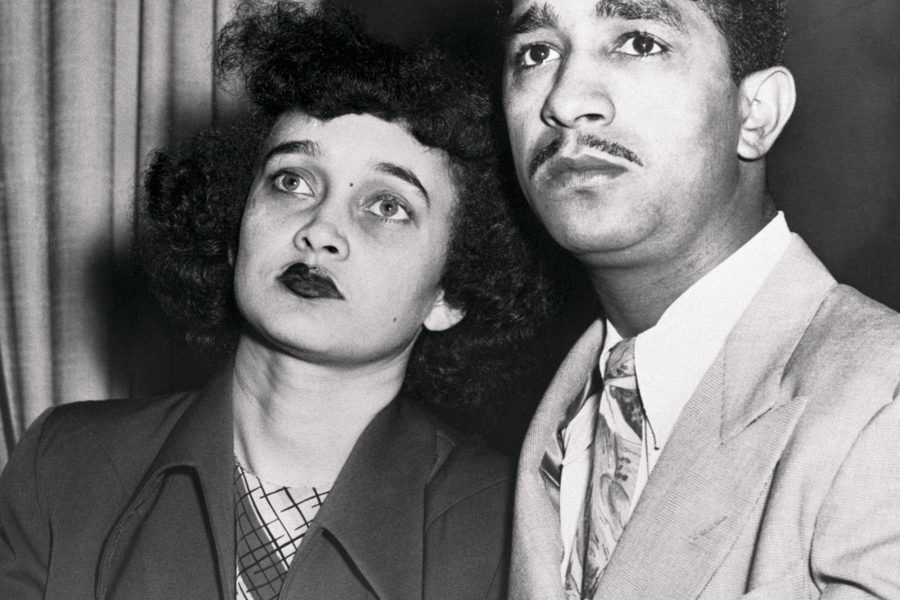
No collection of statistics can fully convey what Bob Herbert describes as the “persistent, depraved, often murderous racial prejudice and discrimination” endured by generations of black Americans. Yet they do tell a story. For every dollar of wealth possessed by the average white family, the average black family has barely over a nickel. A third of black families have zero assets. Forty percent of black children live in poverty. A century and a half after the Civil War, African-American citizens continue to struggle for both equity and equality. In his new documentary, Against All Odds: The Fight for a Black Middle Class, the former New York Times columnist embarks on an emotional journey to find out why racial progress in America remains so elusive.
At a recent Chicago Ideas Week screening, the film itself was introduced with a question: Have black Americans been given a fair shot at the American Dream? The painfully obvious answer, of course, is “no.” But even as we bear witness to the rigging, we are reminded that knowledge of this fact does not equate to an understanding of its causes.
In a captivating collage of archival footage and personal reflection, Against All Odds reminds us that history is not an entity in and of itself, but rather a collection of events that culminate in our present condition. From the repackaging of slavery into sharecropping to the disproportionate impact of the Great Recession on African American neighborhoods, the film portrays a resilient community that is united in survival and unyielding before persistent injustice.
Herbert correlates the American Dream with economic security and social stability, both of which are rooted in a dual foundation of good jobs and affordable, private housing. Taken together, these are the means that enable families to not only build wealth, but to establish a vehicle for its transfer across generations. “The United States,” he asserts, “views a strong middle class not just as an ideal, but as its proudest creation.” The subtext, of course, is the myth of the dream itself: that a life of sufficient comfort is available to anyone, regardless of birth, so long as they are willing to pull themselves up by the bootstraps.
But bootstrapping has never been enough for black America. Even when the Great Migration brought 6 million African-Americans out of the South, systemic racism and coordinated oppression followed. Says Herbert, “The quest for a black middle class, severely hampered by the lack of decent employment, was made all the more horrendous by the vicious and often violent refusal of whites to allow blacks into decent housing.”
In cities like Chicago, the ownership class seized upon the lack of available housing as an opportunity for extortion. This forced African-American families to pay “more [rent] per square foot than almost anyone else in the city — not because of the high quality of the housing, but because the demand was so great that the landlords could charge them more for less.”
Though the GI Bill of 1944 provided a range of ostensible benefits for veterans of the second World War, they were far from available to all. Low-cost mortgages were a key provision of the law, designed to promote what Herbert calls the “second pillar” of middle-class life: private home ownership. But in this pursuit black Americans encountered even more resistance. While white families were empowered to buy homes and build wealth, weaving safety nets of capital that endowed subsequent generations with inherited security, black families were victimized by campaigns of legalized theft, segregation and outright violence.
With circular logic, African-American neighborhoods were deemed “too risky” to lend in, thereby preventing black families from acquiring affordable housing and the stability that comes with it. Before the Fair Housing Act of 1968, the FHA itself prohibited “occupancy of properties except by the race for which they [were] intended.” This precedent, emblematic of the way racism was enshrined in public policy, gave banks the freedom to deny financing on racial grounds, leaving prospective home owners few options. For many, the only alternative was buying on contract, a notorious practice that generated immense profits for speculators — and crippled families in the process.
Bill Matney, who came to Chicago in 1963 as NBC’s first black reporter, explained the contract buying process in an archival newsreel: “Under the contract, the buyer makes installment payments at high interest, but he builds no equity. If he defaults on even one payment, at any time during the contract, he loses the property and everything he’s paid into it.”
Thus, redlining, predatory lending practices and mob violence — like the race riots that marked Martin Luther King’s 1966 visit to Chicago’s Marquette Park neighborhood — did more than confine black people to segregated neighborhoods: These systems siphoned wealth away from black workers and their families, effectively turning African-American communities into domestic colonies. “You had officialdom and custom working hand in hand,” says National Urban League President Marc Morial. “It was truly an American system of apartheid.”
Racial prejudice and exploitative economics have long fueled a politics of division that protects existing power structures. Republican strategist Lee Atwater made that clear in 1981 when he said:
You start out in 1954 by saying, “nigger, nigger, nigger.” By 1968 you can’t say “nigger” — that hurts you, backfires. So you say stuff like, “forced busing,” “states’ rights,” and all that stuff, and you’re getting so abstract. Now, you’re talking about cutting taxes, and all these things you’re talking about are totally economic things and a byproduct of them is, blacks get hurt worse than whites.
In this infamous description of the Southern Strategy, Atwater confirmed what black Americans had known for years — that economic policies institutionalized their collective marginalization. Herbert himself addressed Atwater’s confession in a 2005 column, relating it then to Republican radio host (and former Reagan cabinet member) Bill Bennett’s genocidal remark that “aborting every black baby” would help reduce the crime rate. Herbert deemed the GOP to be “endlessly insulting to black people and overwhelmingly hostile to their interests.” Yet somehow he concluded with optimism: “The U.S. is less prejudiced than it was 20 or 30 or 40 years ago … Bennett’s twisted fantasies are a malignant outgrowth of our polarized past. Our job is to keep them from spreading into the future.”
Looking around, I wonder. While Herbert is right to celebrate the hope and persistence that underwrite black America’s survival, we must reject any attempt to equate survival with a justice that is long overdue. Are we really less prejudiced as a nation? Or has bigotry just largely been subsumed by cryptic policy and abstraction? Indeed, more than 50 years after Martin Luther King, Jr. fought the housing discrimination described in Matney’s newsreel, predatory lenders have revived contract buying on Chicago’s West Side.
Barbara J. Fields, an American history professor at Columbia University and author of Slavery, Race and Ideology in the United States of America, has described the social construction of race as akin to that of witchcraft — an ideology that both derives meaning from and ascribes meaning to lived experience, yet lacks a rational basis. In this view, one problem with our national conversation about racism is that it relies on an assumption of a priori racial categorization that simply doesn’t exist. If we truly seek to end racism, we must dismantle the structure of race itself.
Doing so means we must recognize that the concept of race is inextricably bound to social reality. Therefore, any attempt to unpack racial ideology by isolating it from general principles of social organization will be insufficient by definition. Nowhere is this clearer than in the way profit-driven institutions have exploited African-American communities, only to turn around and use that very exploitation as justification for disinvestment and further marginalization. An honest, structural analysis of racism in America is simply impossible without understanding its capitalist dynamics.
In the Q & A following the screening, Herbert focused heavily on this distinction between race and class, dismissing critiques of the economic system as somehow independent of the topic at hand. But to confine our vision of racial justice to the existing presets of capitalism — especially when the very metric for that justice is economic opportunity and middle class status — is crippling at best. We simply cannot hope to build a new world if we resign ourselves to the blueprints of old.
So it is not without irony that we are told in the film’s final moments that racial prejudice “needs to be fought against relentlessly” because it hasn’t “been fought against nearly hard enough” — problematically implying that victory in the battle against oppression will be determined by will alone. Such a portrayal cannot help but conjure the ghost of Sisyphus, wrestling perpetually against the immense gravity of our nation’s racist legacy: If we only pushed harder, he seems to suggest, we could roll away the boulder of racial injustice once and for all.
But this conception again belies the fundamental nature of systems. After all, it is not just the stone against which Sisyphus must struggle, but also the relation it bears to the mountain slope. Likewise, lifting the curse of systemic racism will ultimately require taking dynamite to the mountain itself.
With pride and humility, Against All Odds paints a portrait of black America’s resilience — a strength Herbert celebrates with tangible emotion. His conclusion is a hopeful assertion that the African-American community will continue to overcome the structural injustice that surrounds it. Yet, for all its optimism, the film ultimately fails to embrace the revolutionary vision required to dismantle our collective misconceptions about class and race, thereby risking complicity in their maintenance.
Herbert was absolutely right to call racism a “malignant outgrowth of our polarized past,” but if we are to succeed in its eradication, we must also recognize it is equally fed by the structures of our present.
InTheseTimes.com readers who would like to watch Against All Odds should click here.




